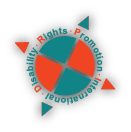VIII. Housing and Dwelling in and with the Community
In the Declaration of Policies of RA 727757, the right to live in the community as equals with the rest of the citizens is explicit. Housing for persons with disabilities is not categorically stated in any Philippine Law except with reference to low cost housing programs for the indigent and the marginalized. In the Social Justice provisions of the 1987 Constitution it states that The State shall, by law, and for the common good, undertake, in cooperation with the private sector, a continuing program of urban land reform and housing which will make available at affordable cost, decent housing and basic services to under-privileged and homeless citizens in urban centers and resettlement areas.
58 Shelter is one of the entitlements of every citizen, and it includes persons with disabilities. The laws and policies on housing and urban development also apply to the sector.
Prior to the enactment of RA 7277, in 1983, 1987 and 1988, three major housing projects were provided to persons with vision impairments and their families.Initiated by the Movement for the Advancement of the Philippine Blind (MAPB), whose members were clients
of the Rehabilitation Sheltered Workshop (RSW), the 1983 Escopa, Project 4 Munting Pamayanan Housing was completed via the partnership of the Department of Social Welfare and Development (DSWD), the National Housing Administration (NHA) and an international non-government organization called the Christoffel Blinden Mission (CBM), that provided the funds. In 1987, DSWD, NHA and CBM, erected the Karangalan Village Shelters in the City of Pasig. In 1988, DSWD, NHA and the Epitah Foundation built the Padilla Housing Village in Antipolo City.
These three housing projects were considered exclusive housing villages of the blind and their immediate families.The houses were of bungalow and duplex types and were sold to the beneficiaries at PHP16 to PHP30 monthly. Records show that the payment was aimed to serve as revolving funds so as to create more housing projects in the future.Since then, no other exclusive housing for persons with disabilities has been constructed.
In addition to a civil case that went on for years [insert cite in footnote] relative to the refusal of a faction of the beneficiaries to honor the payment scheme on the ground that the funds utilized thereat were meant to be grants (quote from Paquito Talo et al versus SUKOB Foundation to follow), donors and observers like the National Committee on the UN CRPD on the Sectoral Council of Persons with Disabilities concludedthat exclusive housing for the blind may not be the best way of responding to such basic need.
Observers identified the following as the reasons for not proceeding with the Exclusive
housing scheme:
-
Sanitation and hygiene is difficult to maintain.
-
Eventually the non blind or sighted relatives and friends take over ownership.
-
The need for integrating persons with disabilities with the rest of the population.
Economic activities have not been successful in the exclusive setting due to unstable sources of income of the beneficiaries.Other than rendering massage services and musical entertainment other sources of income include mendicancy and other illegitimate income generating activities.
In 2000, a housing project for persons with mobility disabilities was started in Davao City. Most of the intended beneficiaries were persons with disabilities employed in the Local Government of the city and the Association of Differently-abled Persons (ADAP) of the same area.Others were employed in the school desk project of the Department of Education as stated in the General Appropriations Act which provides ten (10) percent of the budget for school desk production to cooperatives of persons with disabilities.At present the site which is 30-minute drive from the cityis already being occupied by 75 families.Due to the seasonal nature of the employment of beneficiaries, the need to restructure the payment scheme has been forwarded.Other housing projects for the sector are found in Leganes, Iloilo and the Albay proving in the Visayas and Southeastern Luzon.
Initiated by organizations of Persons with Disabilities, these latter housing projects were partnered by the Sectoral Council of Persons with Disabilities of the National Anti Poverty Commission, the National Housing Authority, the Housing and Urban Development Coordinating Council hudcc, the PAG-IBIG Housing Fund and the respective Local Government Unitis and the Department of Interior and Local Government (DILG).
At present, gradually the exclusive character of the two housing projects is fading. Other housing schemes for persons with disabilities are still in the proposal stages. These schemes include allocating a certain percentage of the housing units to persons with disabilities who can demonstrate capability to sustain agreed payment schemes. The Gawad Kalinga program in partnership with Habitat International has started bringing a good number of capable persons with disability beneficiaries into its community and housing projects. The sector is positively responding to the scheme due to its inclusive and holistic nature.
